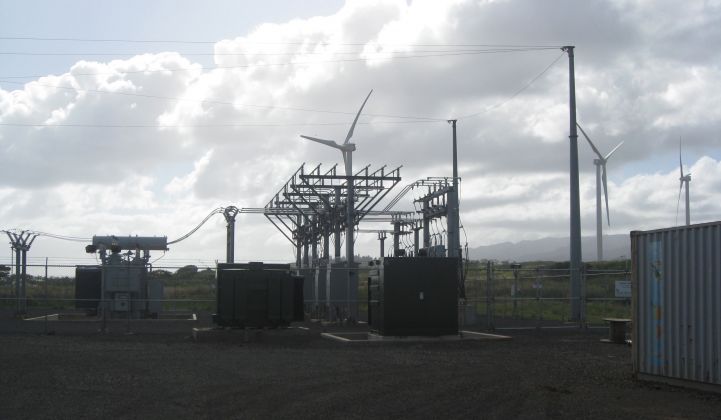Advanced grid battery startup Xtreme Power has always said that it’s not just a battery chemistry shop, but a one-stop grid energy storage solution, including the software to make it all run smoothly. Looks like General Electric (NYSE: GE) has taken Xtreme up on the offer.
On Monday, GE announced it was tapping the Austin, Texas-based startup for its “Xtreme Active Control Technology” (XACT), and planned to use it to integrate GE’s own line of Durathon batteries into grid applications. While GE didn't announce any specific projects it was tackling with its new partner, it did say it was tapping Xtreme’s “experience as an integrated energy storage turnkey solutions provider" for projects to come, indicating a significant role for Xtreme in those projects.
By any measure, the news represents a vote of confidence in Xtreme’s battery management system (BMS) smarts. GE describes XACT as an “innovative proprietary control system architecture that offers sophisticated control algorithms, real-time response, remote monitoring, and optimized power management.” It's also the first publicly announced partnership using Xtreme's BMS for another party's batteries.
Xtreme has raised about $50 million since its 2004 founding and had about 55 megawatts of systems under contract and 22 megawatts installed as of this spring. That’s pretty good, compared to such lithium-ion grid battery competitors as A123 (Nasdaq: AONE), which has more than 100 megawatts of grid-scale energy storage systems installed.
Xtreme's lead acid-based, solid-material batteries are now backing up wind power projects in Hawaii, Texas and Alaska, as well as smaller-scale projects backing up community solar power in Texas and others. Most of those installations run on Xtreme’s own battery management system (BMS), which does everything from monitoring battery capacity and performance to managing the dispatch of stored power to meet specific grid operations and energy market demands.
Competitors for the grid-scale BMS market include A123, S&C Electric, GreenSmith, Silent Power and many others. Electric cars have their own BMS contenders, with automakers like Coda, BYD and Tesla Motors (Nasdaq: TSLA) branching out into grid-scale storage as well.
Xtreme has had some bad publicity lately -- the building that houses its 15-megawatt battery at the 30-megawatt Kahuku wind farm caught fire and burned to the ground last month. UPDATE: Despite initial reports of the cause being the batteries or the electronics, the cause of the fire is still under investigation. Still, firefighters were held at bay for hours out of fear of toxic releases from the batteries, though initial tests show no signs of lead, the batteries’ main ingredient, in the surrounding soil.
GE, for its part, has developed its nickel-salt Durathon battery line with $100 million in R&D funds since 2009, and has made clear it wants to capture grid-scale markets as well as heavy-duty transportation uses like “hybrid” locomotives. Earlier this summer, it partnered with Arista Power, which makes technology to balance solar and wind power, to integrate Durathon batteries into a renewable power management system.



